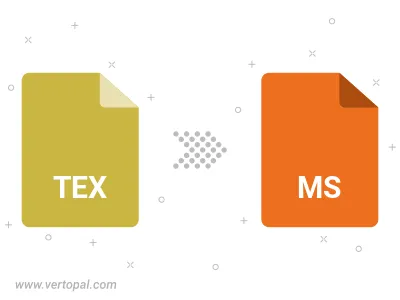Convert TEX to MS
Convert TEX markup documents to MS format, edit and optimize documents online and free.

TEX is the file extension for TeX documents, a typesetting system used for creating professional-quality documents, primarily in academic and technical fields. It was developed by Donald Knuth in the late 1970s to improve the appearance of mathematical and scientific papers. TeX is known for its precision and ability to handle complex formatting. LaTeX, built on top of TeX, simplifies document creation by providing a set of macros and templates for common document structures, making it easier to produce consistent, high-quality output.
The MS file extension, short for "Manuscript", is associated with the roff (runoff) document formatting system used in Unix-like operating systems. It is part of the GNU roff (groff) implementation, which formats documents such as letters, memoranda, reports, and books. Historically, it evolved from the Multics runoff system in the 1960s and became integral to Unix documentation. The MS macro package supports features like cover pages, table of contents, numbered headings, and multi-column layouts.
Choose any TEX markup document from your computer, or drag & drop a TEX file onto this page.
Before clicking the Convert button, use any available TEX to MS tools.
Wait a few moments for the converter to complete its job, then download your MS file.

To change TEX format to MS, upload your TEX file to proceed to the preview page. Use any available tools if you want to edit and manipulate your TEX file. Click on the convert button and wait for the convert to complete. Download the converted MS file afterward.
Follow steps below if you have installed Vertopal CLI on your macOS system.
cd to TEX file location or include path to your input file.Follow steps below if you have installed Vertopal CLI on your Windows system.
cd to TEX file location or include path to your input file.Follow steps below if you have installed Vertopal CLI on your Linux system.
cd to TEX file location or include path to your input file.